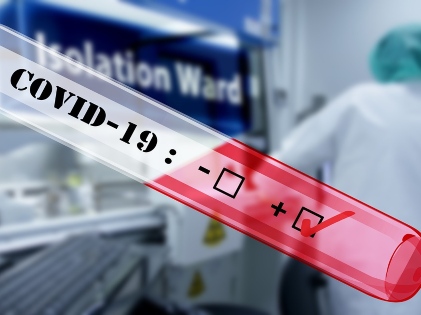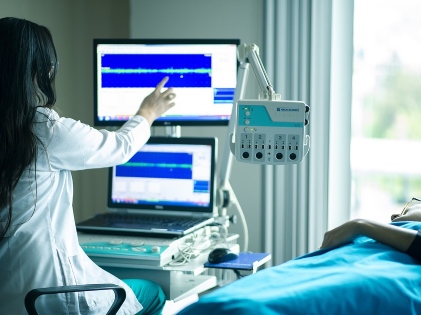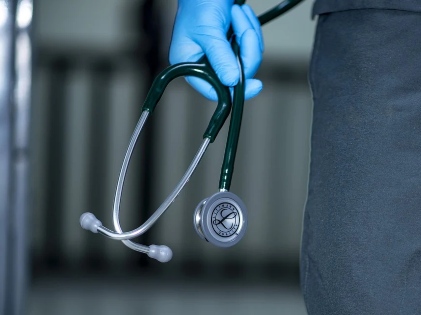The number of COVID-19 cases in the United States has gone up to dreadful heights and things are getting worse by the day. The patients have almost outnumbered the ICU beds at hospitals across the country. If reports are to be believed, approximately 80 percent of the ICU beds are occupied right now, out of which 30 percent have been taken by people who have been infected with the deadly coronavirus. The hospitals in states that have recorded low vaccination rates have either ran out of beds or staff. This entire scenario has put the healthcare system in the U.S. under tremendous pressure. As a result, the complete procedure of providing emergency care has now become jeopardized. It’s looking gloomy out there.
What’s Happening?
 The COVID-19 cases have recently been spiking along the length and breadth of the United States. The hospitals are either facing a shortage of ICU beds or don’t have enough staff to attend to the newly admitted patients. Such is the state that people being rushed to the hospital after suffering a heart attack or facing a car accident have to wait for long until an ICU bed is allotted to them.
The COVID-19 cases have recently been spiking along the length and breadth of the United States. The hospitals are either facing a shortage of ICU beds or don’t have enough staff to attend to the newly admitted patients. Such is the state that people being rushed to the hospital after suffering a heart attack or facing a car accident have to wait for long until an ICU bed is allotted to them.
As the spaces, equipment, and a major share of the staff are occupied with this surge in COVID-19 cases, people visiting the hospital for non-urgent care have to suffer as well. The bitter truth is that most of the infected people are unvaccinated. If a hospital doesn’t have staff, what’s the utility of ICU beds? Nothing. Hospital resources can be categorized into three parts. One – doctors, nurses, and the rest of the staff. Two – beds, rooms, and spaces for other uses. Three – medical supplies and equipment. If any of these three is constrained, the health system is bound to suffer.
Consequently, patients will be affected. An improper supply of PPE and ventilators in the initial stages of the pandemic posed a big challenge for the healthcare system in the United States. Though the supply chain has improved a lot, parts of the country might still be facing shortages on some fronts. Arkansas and Alabama reportedly have low vaccination rates. The hospitals in these states have already declared their ICUs full or even beyond that. What’s the fate of those who will get infected and will be in serious need of medical care? That’s frightening.
Beds are Being Set Up Outdoors
 As the number of COVID-19 cases continues to rise, health systems in some states have decided to set up beds outdoors – in tents, garages, and parking spaces. According to some experts, merely counting the number of occupied beds can be a little misleading. They are pointing out that though there are empty ICU beds, the lack of doctors, nurses, physicians, technicians, respiratory therapists, and other people of staff, have rendered the beds useless. The staff too can’t be blamed, as they are completely stressed out. Caring for patients round the clock, before the surge in COVID-19 cases, and after the spike in numbers, they are themselves suffering from anxiety and burnout. They are too tired, mentally as well as physically to carry on. The subsequent surges have really taken a toll on the patients and the healthcare providers too.
As the number of COVID-19 cases continues to rise, health systems in some states have decided to set up beds outdoors – in tents, garages, and parking spaces. According to some experts, merely counting the number of occupied beds can be a little misleading. They are pointing out that though there are empty ICU beds, the lack of doctors, nurses, physicians, technicians, respiratory therapists, and other people of staff, have rendered the beds useless. The staff too can’t be blamed, as they are completely stressed out. Caring for patients round the clock, before the surge in COVID-19 cases, and after the spike in numbers, they are themselves suffering from anxiety and burnout. They are too tired, mentally as well as physically to carry on. The subsequent surges have really taken a toll on the patients and the healthcare providers too.
Where does Healthcare in the United States Stand Now?
As per HHS, an estimated 30 percent of the ICU beds across the country are occupied right now by COVID-19 patients. Hospitals have been trying their level best to provide services to their full capacities. But when there is a shortage of beds, providing lifesaving care becomes an uphill task. With a spike in the COVID-19 cases and the hospitals running full, the non-COVID patients are bound to face a tough time. Competition for resources is worsening the situation. Rural hospitals are facing the heat. When hospitals reach full capacity, patients have to endure long hours of waiting and that might sometimes continue for days.
The Normal Patients are the Sufferers
 As the hospital staff is stuck, attending COVID-19 patients or taking them to the hospital, the emergency department is recording high volumes. People, who are not infected with COVID-19 have to go through long waits. The present situation has also stretched the number of ambulance services to limit. Delays in providing healthcare to patients suffering from other health conditions such as asthma, diabetes, stroke, or heart attack, can worsen a situation. Imagine what people with cancer or a critical health condition would do in such a situation! They wouldn’t be able to wait for that long.
As the hospital staff is stuck, attending COVID-19 patients or taking them to the hospital, the emergency department is recording high volumes. People, who are not infected with COVID-19 have to go through long waits. The present situation has also stretched the number of ambulance services to limit. Delays in providing healthcare to patients suffering from other health conditions such as asthma, diabetes, stroke, or heart attack, can worsen a situation. Imagine what people with cancer or a critical health condition would do in such a situation! They wouldn’t be able to wait for that long.
As the lion’s share of COVID-19 patients is those who haven’t taken the jab, the government now needs to take strict measures to ensure that they do get inoculated before things get out of hand.





